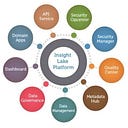Responsible AI in Property & Casualty Insurance: Ensuring Fairness, Transparency, and Accountability
The adoption of artificial intelligence (AI) and machine learning (ML) in the property and casualty (P&C) insurance industry is transforming how insurers operate, from underwriting and premium determination to claims processing and fraud detection. However, the power of AI comes with significant responsibility. Ensuring that AI systems are fair, transparent, and accountable is crucial to maintaining trust and compliance with regulatory standards. This blog post explores the concept of responsible AI in P&C insurance, including the setup of AI/ML governance teams and processes, and the implementation of explainable AI (XAI) for premium determination and claims approvals.
Setting Up AI/ML Governance Teams and Processes
1. Establishing AI/ML Governance Teams
Role and Composition:
- AI/ML Governance Committee: A cross-functional team responsible for overseeing the ethical use of AI. Members should include representatives from IT, data science, legal, compliance, risk management, and business units.
- Data Stewards: Individuals who ensure data quality, privacy, and security.
- Ethics Officers: Professionals who focus on ethical implications and fairness in AI applications.
Key Responsibilities:
- Policy Development: Creating policies for AI use, including ethical guidelines, data privacy, and security protocols.
- Model Validation: Regularly reviewing and validating AI models to ensure they meet ethical and performance standards.
- Transparency and Documentation: Ensuring that AI models and their decision-making processes are well-documented and transparent.
2. Implementing AI/ML Governance Processes
Risk Assessment:
- Bias Detection: Implementing procedures to detect and mitigate bias in AI models, ensuring decisions are fair and equitable.
- Impact Analysis: Assessing the potential impact of AI decisions on various stakeholders, including customers and employees.
Compliance and Monitoring:
- Regulatory Compliance: Ensuring AI systems comply with relevant laws and regulations, such as GDPR for data protection.
- Continuous Monitoring: Establishing monitoring mechanisms to track AI performance and identify any deviations from expected behavior.
Stakeholder Engagement:
- Internal Training: Providing training for employees on the ethical use of AI and the importance of responsible AI practices.
- Customer Communication: Being transparent with customers about how AI is used in underwriting, premium determination, and claims processing.
Implementing Explainable AI (XAI) in P&C Insurance
1. Explainable AI in Underwriting and Premium Determination
Challenges:
- AI models used in underwriting and premium determination can be complex, making it difficult to understand how decisions are made.
- Lack of transparency can lead to mistrust among customers and regulatory scrutiny.
Solutions:
- Model Transparency: Using XAI techniques to make AI models more interpretable. Techniques such as SHAP (Shapley Additive Explanations) and LIME (Local Interpretable Model-agnostic Explanations) can help explain the contribution of each factor to the final decision.
- Customer Communication: Providing clear and understandable explanations to customers about how their premiums are determined. This can include personalized reports that outline the factors influencing their premium rates.
Example: An insurer uses an AI model to determine auto insurance premiums. By implementing SHAP, the insurer can generate explanations showing how factors like driving history, vehicle type, and location contribute to the premium. This information is then communicated to customers, enhancing transparency and trust.
2. Explainable AI in Claims Approvals and Rejections
Challenges:
- AI-driven claims processing can lead to disputes if customers do not understand why their claims were approved or rejected.
- Ensuring fairness and avoiding bias in claims decisions is critical.
Solutions:
- Decision Traceability: Implementing XAI tools to provide a clear trace of the decision-making process for each claim. This includes documenting the data inputs, model outputs, and reasoning behind each decision.
- Appeal Process: Establishing a clear and transparent appeal process for customers to contest claims decisions, supported by explainable AI insights.
Example: An insurer uses an AI model to process home insurance claims. By using LIME, the insurer can create explanations for each claim decision, highlighting the key factors and evidence considered. If a claim is rejected due to insufficient documentation, the explanation can guide the customer on what additional information is needed for reconsideration.
Best Practices for Responsible AI in P&C Insurance
1. Ethical AI Framework:
- Develop a comprehensive ethical AI framework that outlines principles for fairness, transparency, and accountability.
- Ensure the framework is integrated into all stages of AI development and deployment.
2. Bias Mitigation:
- Regularly audit AI models for bias and take corrective actions to address any identified issues.
- Use diverse and representative datasets to train AI models.
3. Customer-Centric Approach:
- Prioritize the customer experience by providing clear explanations and maintaining open lines of communication.
- Empower customers with tools and resources to understand AI-driven decisions.
4. Continuous Improvement:
- Establish feedback loops to gather insights from customers and stakeholders on AI performance and fairness.
- Continuously update and refine AI models and governance processes based on feedback and new developments.
Conclusion
Responsible AI is essential for the sustainable and ethical use of AI in the property and casualty insurance industry. By setting up robust AI/ML governance teams and processes, and implementing explainable AI in underwriting and claims processes, insurers can ensure that their AI systems are fair, transparent, and accountable. This not only enhances trust and compliance but also positions insurers as leaders in ethical AI practices, ultimately benefiting both the company and its customers. As the technology evolves, the commitment to responsible AI will be crucial in navigating the challenges and opportunities in the P&C insurance sector.
About — The GenAI POD — GenAI Experts
GenAIPOD is a specialized consulting team of VerticalServe, helping clients with GenAI Architecture, Implementations etc.
VerticalServe Inc — Niche Cloud, Data & AI/ML Premier Consulting Company, Partnered with Google Cloud, Confluent, AWS, Azure…50+ Customers and many success stories..
Website: http://www.VerticalServe.com
Contact: contact@verticalserve.com
